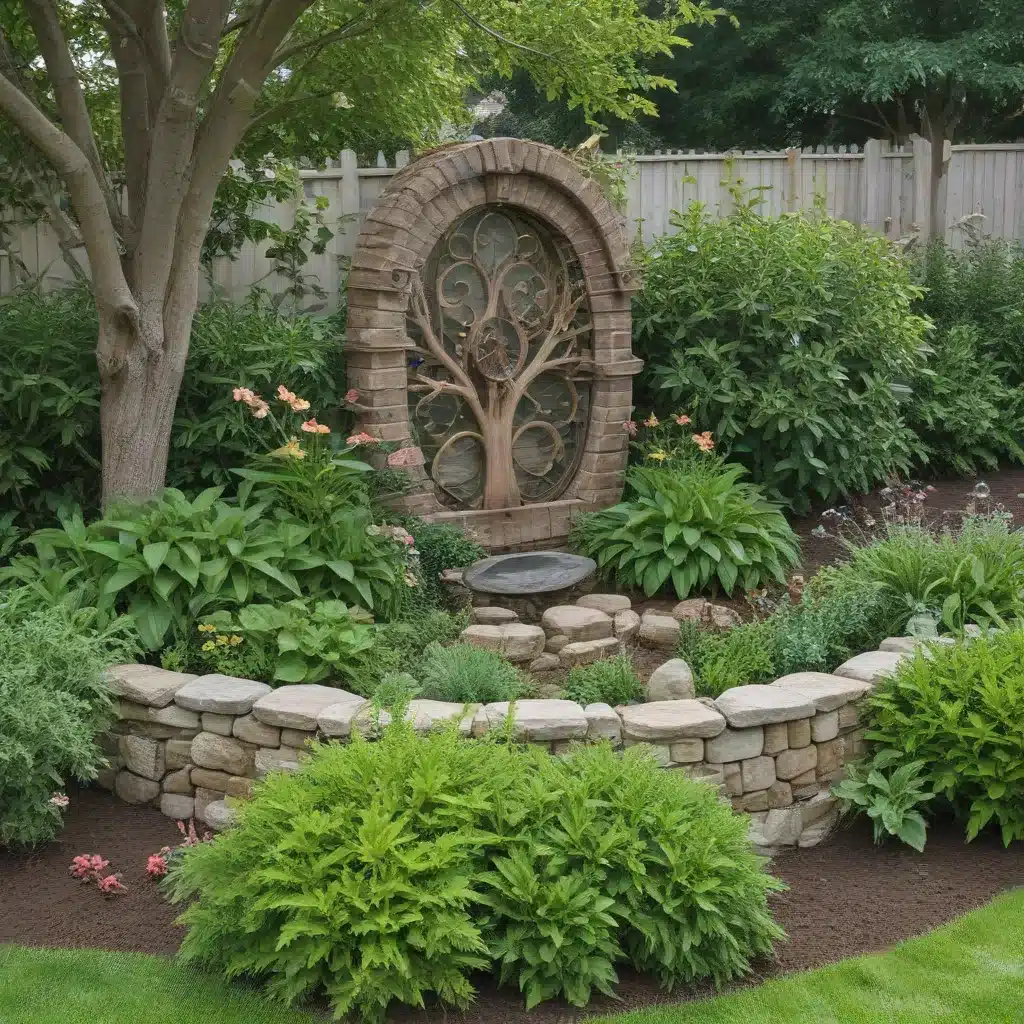Focal Points and Features: Using Garden Art to Showcase Your Landscape
Discovering the Art in My Own Backyard
As I gazed out my kitchen window on a cool, overcast January morning, I realized just how much I appreciate the garden decor in my backyard, especially during the winter months. While I couldn’t venture out for a stroll due to the soggy, clay soil, I had a clear view of the various artistic elements scattered throughout my landscape.
There was the formal, stone-carved bird bath near the bay window, the concrete statue of St. Francis facing the bird feeder, and the whimsical, chainsaw-carved chairs nestled between the woodland buffer. These garden accessories, or “ornamentation” as the experts call them, were much more visible now, without the abundant foliage of spring and summer to obscure them.
As I learned from the Durham Master Gardeners, these focal points and accents serve an important purpose in the garden, drawing the viewer’s eye through the landscape and creating depth and interest, even during the winter months when the garden can appear flat and monochromatic. In fact, the addition of these artistic elements has transformed my fledgling backyard into a captivating outdoor space that I can enjoy year-round.
The Art of Landscape Design
Landscaping is, in itself, an art form, with gardens embracing both the artistic and the scientific. As the Oxford Companion to Gardens explains, “No two gardens are ever identical,” each one a unique expression of the designer’s vision and the site’s peculiarities.
Over the years, as I’ve toured both private and public gardens with my fellow Master Gardeners, I’ve noticed an increasing presence of original sculpture and other works of art. These artistic elements seem to be elevating the traditional garden features like fountains, sundials, and pagodas, inviting visitors to linger and engage more deeply with the surrounding landscape.
Discovering Inspiration in Public Gardens
One of the most memorable garden art experiences I’ve had was visiting the Biltmore Estate in Asheville, North Carolina, where we were treated to a stunning Dale Chihuly glass sculpture exhibit. The vibrant, modernistic glass forms seemed to both complement and contrast with the classical, moss-covered busts and the serene lily pools, creating a captivating interplay of old and new, natural and man-made.
Similarly, during a trip to the New York Botanical Gardens, I was awestruck by the way the Chihuly sculptures seemed to capture the evening light, casting dramatic shadows and taking on a regal, almost otherworldly presence against the backdrop of the lush greenery and the deep, Carolina-blue sky.
Incorporating Garden Art into Your Landscape
Of course, not all of us can afford the caliber of artwork on display at the Biltmore or the New York Botanical Gardens. But that doesn’t mean we can’t incorporate creative, meaningful garden art into our own outdoor spaces. The key is to consider the scale, placement, and style of the artwork in relation to the overall design and atmosphere of the garden.
As the Durham Master Gardeners suggest, focal points should be carefully positioned to direct the viewer’s gaze and encourage exploration of the garden. This could be a thoughtfully placed sculpture, a distinctive bench or chair, or even a captivating specimen plant. The goal is to create a sense of movement and discovery, enticing the visitor to venture further into the landscape.
When selecting garden art, it’s also important to consider the style and materials that will best complement the overall design aesthetic. For a more informal, whimsical garden, a playful, brightly colored sculpture or a unique, repurposed chair might be the perfect fit. In a more formal, classical setting, a stone or metal sculpture with clean lines and symmetry could be the ideal focal point.
Finding Meaning in Garden Art
But garden art can be more than just a visual delight; it can also serve to educate and inspire. As I’ve seen in public gardens and parks, some sculptural pieces can commemorate important historical events or highlight the cultural heritage of a community, adding depth and meaning to the overall landscape.
In my own backyard, I’ve tried to incorporate more environmentally-conscious elements, such as repurposed natural materials that will eventually enrich the soil and support local wildlife. By choosing garden art that reflects my values and concerns, I feel a deeper connection to the land and a sense of stewardship that extends beyond the purely aesthetic.
Creating Your Own Outdoor Masterpiece
So, as you plan your landscape design, don’t be afraid to let your creativity shine through. Whether it’s a whimsical, hand-carved chair, a thought-provoking sculpture, or a simply a well-placed boulder, garden art can transform your outdoor space into a true work of art – one that you and your family can enjoy for years to come.
And who knows, maybe your backyard masterpiece will one day inspire others, just as the gardens I’ve had the privilege to visit have inspired me. After all, as A1 Landscape Construction knows, the art of landscape design is all about creating captivating outdoor spaces that reflect the unique personality and vision of the homeowner.




